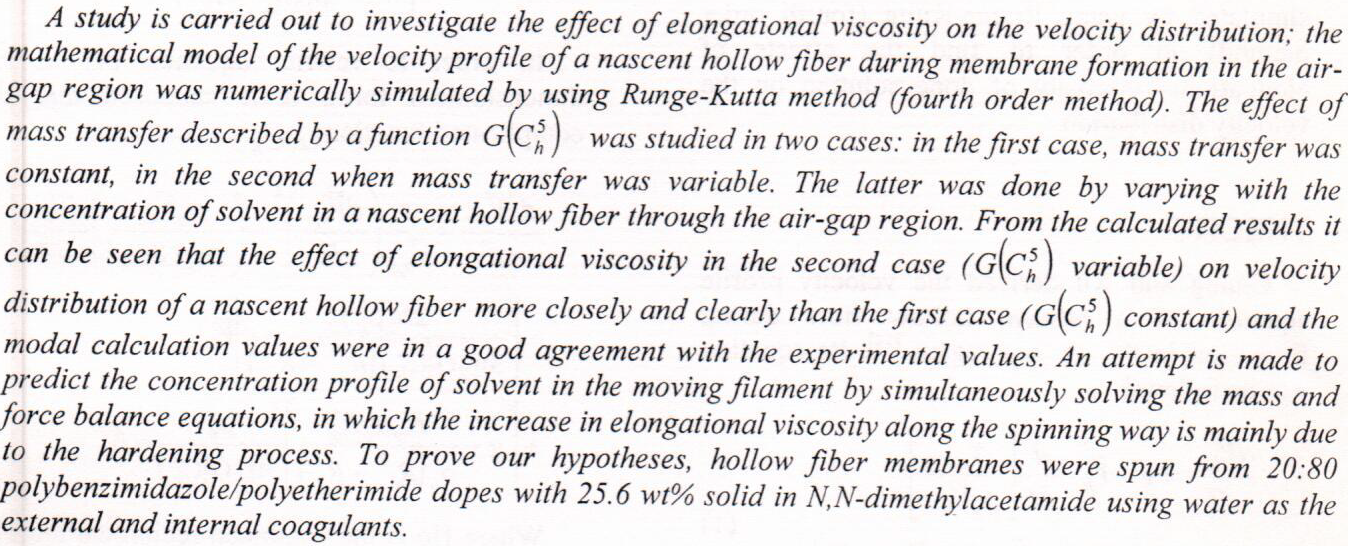
In the oil industry, the processing of vacuum residue has an important economic and environmental benefit. This work aims to produce industrial petroleum coke with light fuel fractions (gasoline, kerosene , gas oil) as the main product and de asphalted oil (DAO) as a side production from treatment secondary product matter of vacuum residue. Vacuum residue was produced from the bottom of vacuum distillation unit of the crude oil. Experimentally, the study investigated the effect of the thermal conversion process on (vacuum residue) as a raw material at temperature reaches to 500 °C, pressure 20 atm. and residence time for about 3 hours. The first step of this treatment is constructing a carbon steel batch re
... Show More (2)
(2)
The current research aims to know the effect of teaching using multiple intelligences theory on academic achievement for students of primary school. The sample search of pupils . The research sample was divided into two groups where the first group represented the experimental group which studied the use of multiple intelligences and the second group represented the control group which studied the use of the traditional way . The search tool consisted of achievement test. Showed search results, there are statistically significant differences(0.05) between the average scores of students who have studied according to multiple intelligences between the average scores of students who have studied in accordance with the tradition way in the p
... Show MoreTi6Al4V alloy is widely used in aerospace and medical applications. It is classified as a difficult to machine material due to its low thermal conductivity and high chemical reactivity. In this study, hybrid intelligent models have been developed to predict surface roughness when end milling Ti6Al4V alloy with a Physical Vapor Deposition PVD coated tool under dry cutting conditions. Back propagation neural network (BPNN) has been hybridized with two heuristic optimization techniques, namely: gravitational search algorithm (GSA) and genetic algorithm (GA). Taguchi method was used with an L27 orthogonal array to generate 27 experiment runs. Design expert software was used to do analysis of variances (ANOVA). The experimental data were
... Show More (9)
(9)
 (7)
(7)
 (4)
(4)
 (3)
(3)
the current study Included, evaluation the impact of Nitrofurantoin drug on liver in albino mice, 128 male albino mice have been used . Animals treared with (150,200 Mg/Kg) for 8 weeks . NFI caused histological changes in liver represented by , swelling of hepatocytes, disappearance of radial arrangement , vaculation of liver cells , increasing of kupffer cells and appearance of giant cells. NFT caused Congestion of blood vessels and infiltration of inflammatory cells in liver in all used concentrations.
Aim: The present study aims to improve the poor water solubility of zaltoprofen which is a non-steroidal anti-inflammatory drug (NSAIDs) with a potent analgesic effect using solid dispersion then formulate it as a hollow type suppository to be more convenient for geriatric patients. Materials and Method: Zaltoprofen solid dispersions were prepared by solvent evaporation technique in different zaltoprofen: Soluplus® ratios. Results: Among the formulations tested, zaltoprofen solid dispersion preparation using 1:5 (zaltoprofen: Soluplus®) ratio showed the highest solubility and selected for further investigation. Solid dispersion characterization was evaluated by differential scanning calorimetry (DSC), X-ray diffraction study (XRD) and Fou
... Show MoreA new reversed phase- high performance liquid chromatographic (RP-HPLC) method with Ultraviolet-Visible spectrophotometry has been optimized and validated for the simultaneous extraction and determination of organic acids present in Iraqi calyces of Hibiscus Sabdraffia Linn. The method is based on using ultrasonic bath for extracting organic acids. Limit of detection in µg/ml of Formic acid, Acetic acid, Oxalic acid, Citric acid, Succinic acid, Tartaric acid, and Malic acid 126.8498×10-6, 113.6005×10-6, 97.0513×10-6, 49.7925×10-6, 84.0753×10-6, 92.6551×10-6, and 106.1633×10-6 ,respectively. The concentration of organic acids found in dry spacemen of calyces of Iraqi Hibiscus Sabdraffia Linn. under study: Formic acid, Acetic acid,
... Show MoreThe present analysis targets to recognize the influence of the separate teaching approach on the accomplishment of grammar for scholars of the College of Islamic Sciences. The target of attaining this target led the investigations developing the subsequent null theories: 1. No statistically substantial variance is happened at the consequence level of 0.05 between the mean scores of the scholars in the investigational category who learnt consistent with the separate learning approach and the mean scores of the scholars in the control category who learnt in the conventional method in the accomplishment test. 2. No statistically substantial variance has been observed at the consequence level of 0.05 in the mean differences between the
... Show MoreIn this study, the physical, and mechanical properties of low-cost and biocomposites were evaluated. The walnut shell and date palm frond fibers were thermally treated in an oven at a temperature of 70°C and then chemically treated with NaOH and distilled water solution, after these treatments, the biocomposite materials will be thermally treated again at 50°C. This procedure was performed for three types of biocomposite; Walnut shell Fiber Reinforced Polymer (WFRP), Date palm Fiber Reinforced Polymer (DFRP), and Hybrid Fiber Reinforced Polymer (HFRP), whereas the biocomposite sheets consisting of 30% biofibers and 70% unsaturated polyester, the mechanical test specimens were cut by a CNC machine according to ASTM standards. The e
... Show More (2)
(2)
 (2)
(2)
